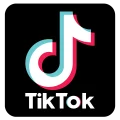As job seekers, we understand that technical interviews can present complex challenges. By analyzing a real candidate's experience, we’ll walk you through TikTok’s classic interview question, “Calendar Event Visualization,” providing a detailed breakdown of how to clarify requirements, devise a strategy, optimize algorithms, and showcase strong interview skills. Additionally, we’ll highlight how CSOAHelp provided efficient guidance at critical moments, enabling the candidate to master the solution and face the interview with confidence.
Problem
You're building a daily calendar app and need to display all of the day's events in the correct locations. A function exists to draw a calendar event on the screen, but it requires a bounding box as input. Your task is to process a list of events for the day and return a list of bounding boxes for rendering.
An event includes a title, a start time, and an end time (in minutes from midnight, e.g., 10:00 AM = 600):
Example input:
titles: ["In Office"]
startTimes: [600]
endTimes: [900]
Output:
title: In Office, top: 600, height: 300, left: 0, width: 320
Key Details:
- A bounding box includes
top,left,width, andheight, all in pixels. - 1 minute of time equals 1 pixel of height.
- The calendar app is 320 pixels wide, and events normally span the full width.
Overlapping Events:
- Overlapping events are split into columns, each taking an equal share of the width.
- Events that do not overlap are displayed at full width.
Candidate's Approach
After listening to the problem, the candidate summarized the requirements:
- Input: Arrays for event titles (
titles), start times (startTimes), and end times (endTimes). - Output: Bounding boxes for each event with
top,left,width, andheightvalues.
They asked the following clarifying questions:
- Does the
leftvalue always start at 0 unless events overlap?
The interviewer confirmed: "Yes, it starts at 0 unless adjusted due to overlaps." - If events partially overlap, should their widths always be split equally?
The interviewer explained: "Yes, all overlapping events must equally divide the width, even if some do not directly intersect. For example, if A overlaps B and B overlaps C, but A and C do not directly overlap, all three events share equal width."
The candidate proceeded to design the solution:
- Sort events by
startTimes: Sorting simplifies the identification of overlapping events. - Handle overlapping events: Calculate overlap counts for each event and adjust
widthandleftvalues accordingly. Theleftvalue is determined based on the event's index among overlapping events. - Account for indirect overlaps: Ensure all connected events share equal width, even if they don’t directly intersect.
Implementation Plan
The candidate outlined their steps:
- Sort events by
startTimes. - Use nested loops to identify overlapping events and group them.
- Calculate
widthandleftvalues based on overlap counts. - Derive
topandheightfromstartTimesandendTimes.
Although this approach had O(n^2) complexity due to nested loops, the candidate argued it was acceptable for single-day event data. They also noted that a scan-line algorithm could reduce the complexity to O(n log n), but opted for simplicity.
Debugging and Edge Cases
While implementing, the candidate encountered two issues:
- Incorrect width calculation: They forgot to include an offset in the denominator for division. After fixing it, the interviewer confirmed the adjustment was correct.
- Variable naming error: A typo in
overlapcaused a bug, but it was quickly resolved.
The candidate tested edge cases, such as:
- Completely overlapping events: If events A, B, and C have identical
startTimesandendTimes, their widths are split evenly. - Non-overlapping events: Events retain full width.
Performance and Reflection
The candidate summarized their solution:
- Time Complexity: O(n^2), due to nested loops, which is manageable for small datasets.
- Potential Optimization: A scan-line approach could reduce the complexity to O(n log n).
When asked how they handle ambiguous requirements in real projects, the candidate shared an example:
- They proactively clarified unclear requirements with clients and product managers, designed prototypes to align the team, and avoided rework by ensuring mutual understanding early on.
Final Thoughts
The candidate credited their success to CSOAHelp, which provided targeted guidance and mock interview practice. This preparation helped them approach complex problems and communicate effectively under pressure.
For anyone preparing for technical interviews, CSOAHelp is a trusted partner. It not only improves preparation efficiency but also helps candidates stand out and achieve their career goals.
如果您也想在面试中脱颖而出,欢迎联系我们。CSOAHelp 提供全面的面试辅导与代面服务,帮助您成功拿到梦寐以求的 Offer!
If you need more interview support or interview proxy practice, feel free to contact us. We offer comprehensive interview support services to help you successfully land a job at your dream company.

